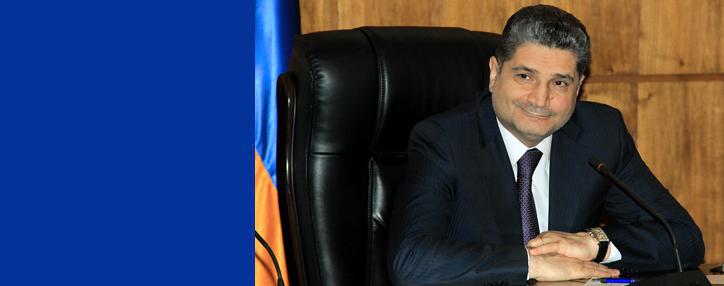Armenia in dialogue with CIS countries while Azerbaijan moving in opposite direction: prime minister
16.11.2012,
21:34
Armenia could start a dialogue with Azerbaijan if the latter pursued the same values as the rest of former Soviet republics making the Commonwealth of Independent States (CIS), but it goes in the other direction, Armenian Prime Minister Tigran Sarkisian said today during a meeting with members of the Club of Editors of the CIS countries, the Baltic States and Georgia.

YEREVAN, November 16. / ARKA /. Armenia could start a dialogue with Azerbaijan if the latter pursued the same values as the rest of former Soviet republics making the Commonwealth of Independent States (CIS), but it goes in the other direction, Armenian Prime Minister Tigran Sarkisian said today during a meeting with members of the Club of Editors of the CIS countries, the Baltic States and Georgia.
"We see CIS countries implementing reforms in the same direction - we are building a market economy, a democratic society, we declare certain values, which indicate what kind of a future we want to have. And we need a dialogue, above all, in this regard, but here we see that Azerbaijan is moving in a completely different direction. It is an authoritarian state, which does not respect human rights, and fr om this point of view it is very difficult to find a common language with it,” he said.
"Of course, we are interested in building normal relations with Azerbaijan, but you can see what is happening in that country, wh ere does it leadership take the country to", he said.
Armenia’s relations with Azerbaijan spoiled after the conflict in Nagorno-Karabakh which broke out in 1988 after the predominantly Armenian-populated enclave declared about secession from Azerbaijan As Azerbaijan declared its independence from the Soviet Union and removed the powers held by the enclave's government, the Armenian majority voted in 1991, December 10, to secede from Azerbaijan and in the process proclaimed the enclave the Republic of Nagorno-Karabakh. Full-scale fighting, initiated by Azerbaijan, erupted in the late winter of 1992. International mediation by several groups including Europe's OSCE’s failed to bring an end resolution that both sides could work with.
In the spring of 1993, Armenian forces captured regions outside the enclave itself. By the end of the war in 1994, the Armenians were in full control of most of the enclave and also held and currently control seven regions beyond the administrative borders of Nagorno-Karabakh. Almost 1 million people on both sides have been displaced as a result of the conflict. A Russian- -brokered ceasefire was signed in May 1994 and peace talks, mediated by the OSCE Minsk Group, have been held ever since by Armenia and Azerbaijan.-0-



